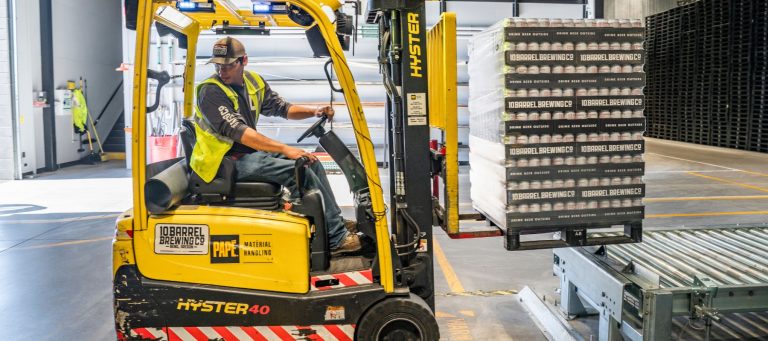As of 30 May 2021, SafeWork NSW released its Code of Practice for Managing Psychosocial Hazards at Work. This is the first specific Australian work health and safety code of practice providing practical guidance and information on psychosocial hazards.
Click here for more information and to download the Code: https://www.safework.nsw.gov.au/__data/assets/pdf_file/0004/983353/Code-of-Practice_Managing-psychosocial-hazards.pdf
Shortly after, in June 2021 ISO 45003:2021 Occupational health and safety management – Psychological health and safety at work – Guidelines for managing psychosocial risks was published. This document was designed to work in conjunction with its sister document ISO 45001:2018 Occupational health and safety management systems — Requirements with guidance for use. ISO 45003 contains clear guidance on how to incorporate psychosocial risk management into safety management systems. It enables organizations to prevent work-related injury and ill health of their workers and other interested parties, and to promote well-being at work.
Click here for more information and to download ISO 45003: https://www.iso.org/standard/64283.html
The health and safety legislation defines ‘health’ as including both physical and psychological health. When psychosocial hazards and risks at work are not effectively managed, this may increase the risk of work-related psychological and physical injuries, incidents and errors.
Thus, the release of the Code and then the standard is an exciting development and provides businesses with explicit clarity on what common psychosocial hazards look like and how to ensure psychosocial risk management is integrated into how organisations do their work. From our experience, whilst the last decade has seen a heighted awareness on psychosocial hazards, businesses have been seeking guidance on how to identify contributing factors, and what they can to do to control psychosocial hazards once identified.
The Challenge
As a herniated disc is an output of a manual handling hazard; mental ill-health is an output of a psychosocial hazard.
On first review of these documents, businesses are likely to be challenged – as each reader may need to reflect on their mindsets and past bias. The positive is, that through our dealings, we know that businesses have a desire to be proactive in the psychosocial hazard space, however, have often struggled with the contributing factors and the potential controls. The details contained within Code of Practice for Managing Psychosocial Hazards at Work and ISO 45003;2021 we feel provides direction to assist business start to understand what psychosocial hazards are, allowing them to be more proactive in this space.
What are Psychosocial Hazards?
Psychosocial hazards at work are a combination of work aspects and work situations that may cause a stress response which in turn can lead to psychological or physical harm. Psychological hazards stem from –
- the way the tasks or job are designed, organised, managed and supervised
- tasks or jobs where there are inherent psychosocial hazards, or environments that evoke a physiological or stress response
- the equipment, working environment or requirements to undertake duties in physically hazardous environments
- social factors at work, workplace relationships and social interactions, or the lack thereof.
Some of the most common psychosocial hazards include:
- Role overload (high workloads or job demands)
- Role underload (low workloads or job demands)
- Exposure to traumatic events
- Role conflict or lack of role clarity
- Low job control
- Conflict or poor workplace relationships between workers and their supervisors and managers and co-workers
- Poor support from supervisors and managers
- Poor co-worker support
- Workplace violence
- Bullying
- Harassment including sexual harassment
- Inadequate reward and recognition
- Hazardous physical working environment
- Remote or isolated work
- Poor procedural justice (processes for making decisions)
- Poor organisational change consultation

Of this list, there will be psychosocial hazards relevant and some psychosocial hazards not relevant to your work; there may also be hazards at your workplace not included. On top of this, psychosocial hazards can vary from workgroup to workgroup. They will be identified through a hazard and risk identification process not only for the organisation but for different work locations.
Legal Duties?
Under state and territory workplace health and safety legislation employers have a duty to ensure, so far as is reasonably practicable, the health and safety of workers and visitors to the business by identifying hazards and eliminating or minimising any risks. ‘Health’ includes both physical and psychological health. Hazards are anything that can cause harm, and risk means the possibility of harm (death, injury or illness) which might occur if a worker is exposed to a hazard. With Safe Work Australia reporting:
- 7,200 Australians are compensated for work-related mental health conditions, equating to around 6% of workers’ compensation claims, and approximately $543 million is paid in workers’ compensation for work-related mental health conditions.
- From the date, it is clear that workplace factors can influence the health and safety of those in our workplaces. As a result, there is a legal duty to identify where these hazards may stem from; and establish ways to control their impact.
What do I need to do?
If you are in NSW the importance of the Code cannot be understated. As a gazetted Code, all NSW businesses must comply with the steps it sets out, which are viewed as evidence of reasonably practicable steps available to a duty-holder. The Code applies to all workplaces, no matter what size or location, and therefore should be read and understood by all business owners. The guidance in it can also assist businesses across Australia.
Importantly, the Code provides user-friendly examples of how different types of organisations might approach psychosocial hazards in their business. In addition, ISO 45003:2021 will also guide businesses in any state regarding what good practice looks like. While this is a standard and not mandatory by law, with the increased focus in this space we anticipate that it may become a minimum expectation for businesses in the future.
What if I am not in NSW ?
Given the philosophical similarities between the health and legislation in Australia, and with businesses having a primary duty to ensure, so far as is reasonably practicable, the health and safety of workers and other persons are not put at risk from work carried out arising from the business – the code and standard will assist businesses to identify and manage any risks in your workplace.
The Opportunity
These documents provide a guideline for organisations to audit their own approach to managing psychosocial hazards, with a view of identifying improvements, and closing any gap in the effectiveness of that approach.
Psychosocial hazard management is not a fix and forget situation. Like all other aspects of safety, it requires continual review and improvement. With each improvement, as the psychological health of your workers improve, you can expect workforce productivity, creativity and organisational success to flourish.
Need Assistance?
If you are looking to streamline your identification and management of psychosocial hazards, please do not hesitate to contact us to discuss further.






